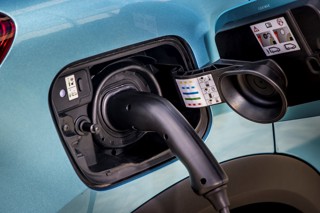Ian Terblanche, strategic sales and channel director at Sigfox
With ever-growing pressure to streamline operations, reduce costs, while keeping an eye on sustainability, fleet management is an unenviable task.
Fleet managers have to optimise the overall cost of transportation, in the face of staff shortages during the pandemic and rising fuel costs, to improve fleet deployment and staff productivity, while meeting ever increasing requirements to reduce CO2 emissions.
They also need to comply with regulatory obligations, provide transparency of operations and meet service-level agreements (SLAs).
Fleet managers are the pivotal connection between suppliers and customers and are vital to the uninterrupted operational flow in the supply chain and commerce.
As a result of disruptions to the logistics networks over the past year, many companies are looking to increase their supply chain resilience.
Increased investment in supply chain technologies, such as artificial intelligence (AI) and machine learning (ML), are a key way forward.
In order for AI/ML systems to function optimally, they must have access to algorithms based on live, intelligent, usable data.
Digital technology is the pathway to this data and includes connectivity and IoT (Internet of Things) devices providing real-time fleet visibility and monitoring; business intelligence software to extrapolate and evaluate data to accelerate decision-making; and cloud technology enabling both cost savings and facilitating faster data processing.
Where IoT technologies are yet to be adopted in supply chain management (SCM), we see fleet managers wasting time and resources collating data manually from disparate sources in order to analyse and act upon.
This lack of agility and transparency has a knock-on effect, but companies that have embraced solutions that enable data transfer, communication and analytics are seeing gains in ROI, sustainability and efficiency and overall ease of managing their fleet operations.
One such example of fleet optimisation at its best is IoT technology implemented to not only gain an overview of fleet location and status through GPS tracking, but also in the storage and exchange of idling returnable assets/packaging in this case, pallets.
Road freight transport companies travel long distance to collect and bring empty pallets back to their owners, which is costly and unproductive, while having a negative environmental impact in empty miles.
By bringing together actual route data and end-client behaviour with future predictions, supply chain managers can project where assets need to be in advance of demand and optimise route planning as well as maximizing local storage requirements.
With better location tracking of a fleet and pallets, users (such as retailers) are able to exchange pallets via a collaborative online platform and use their fleet operations to establish the most efficient routes to deliver and recover the pallets.
This promotes collaboration between businesses, reduces CO2 emissions and empty miles, while streamlining operations and costs.
Indeed, the losses related to poor management of returnable assets add up.
Returnable and reusable assets can cost between $200-$6,500 per unit or even more depending on the industry.
And that is not including the cost of the inventory that each asset is carrying.
The good news is that resolving this issue of theft or loss of returnable assets has a massive impact on operational efficiency.
If we take the asset tracking data a step further and feed it into AI software, that would then be able to regularly track footfall of venues which took delivery of the kegs and compare it to how much product was being consumed at each venue at regular intervals.
The data could be filtered all the way back to marketing functions in a consumption-modelling capacity to gain a next-level understanding and drive pan-business efficiencies – all afforded by AI input coupled with IoT.
To achieve this valuable and never seen before insight, it is critical to have a platform that can digest and make sense of multiple data points, both real and from AI and ML technologies.
Additionally, through an intelligent overview of fleet operations, fleet managers can assign transport efficiently resulting in fewer trucks, less fuel, reducing their carbon footprint and costs.




















Login to comment
Comments
No comments have been made yet.